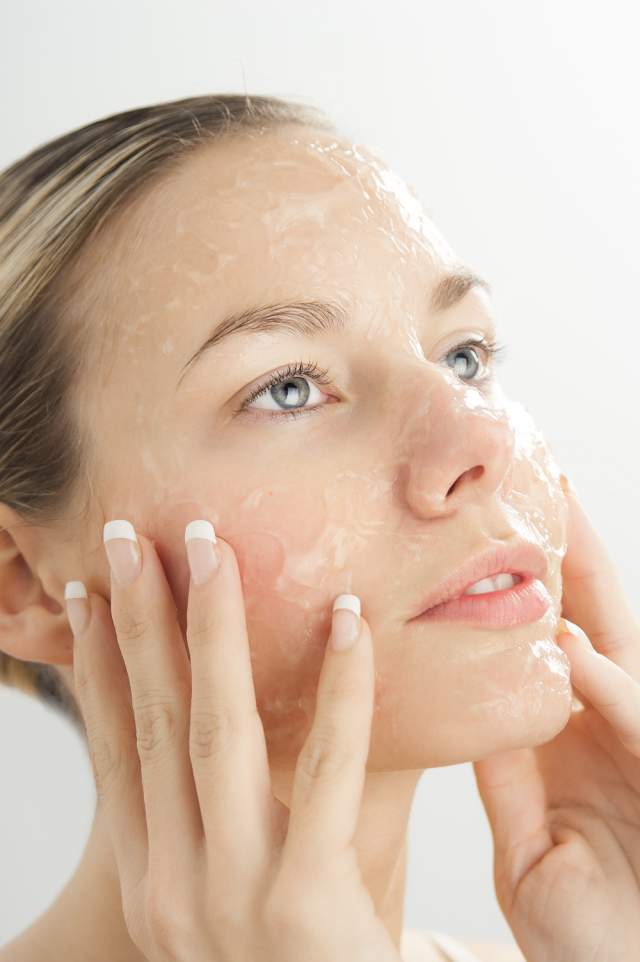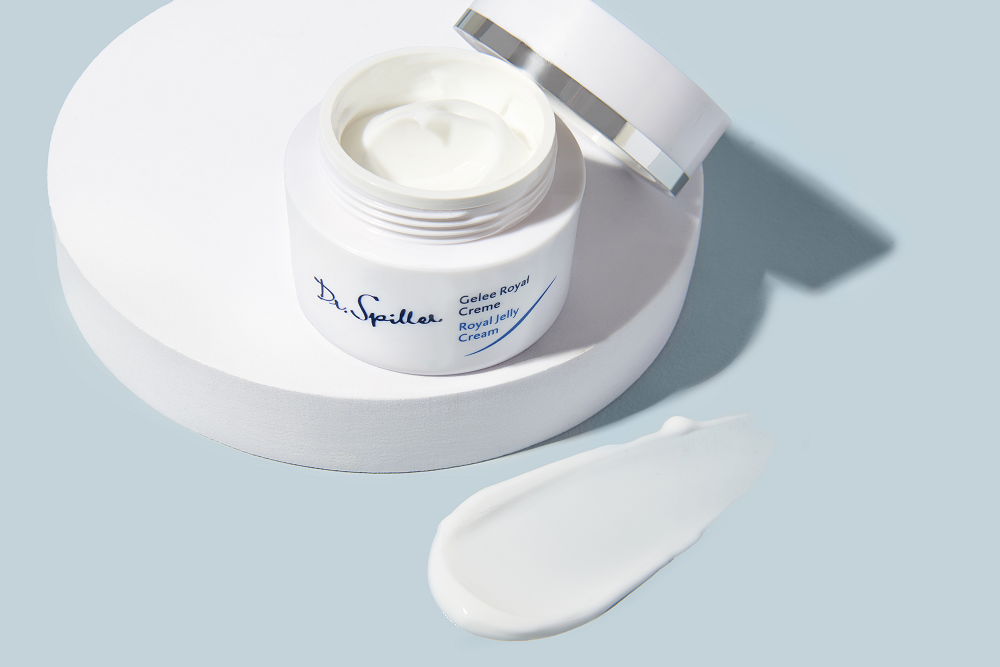By Paul Fister, B.Bus (Mktg), Dip. Form. Chem., Member ASCC
Skin Slugging is a term that comes from K-Beauty (Korean Beauty). It involves coating the skin with a layer of Vaseline, petroleum jelly or the like before going to bed. It acts to serve as a response to the common problem of dehydration in skin.
The idea of skin slugging is to apply a thick layer of petrolatum onto the skin at bed time. This will form an occlusive layer, prevent moisture loss during the night and therefore increase hydration levels in the skin. It is an extreme measure.
According to K-Beauty, moisture in the skin is paramount. And while we agree, we do see that skin slugging in this way is not only unnecessary, but in fact potentially damaging to the skin (or at the very least, counterproductive).
Skin Hydration and the 15% Rule
It’s true that the right level of hydration in the epidermis is of vital importance. It is also true that dehydration of the skin is a common problem. We have been teaching our clients for over 20 years that the moisture content in the stratum corneum should be 15% at minimum. Below 15%, we see various common symptoms that get progressively worse as the level of dehydration increases.
We categorise such symptoms as:
- Dehydrated skin
- Tight skin
- Rough skin
- Scaly skin
- And finally, xerosis.
Symptoms that go hand-in-hand with the above are diffused redness, rashes, perioral dermatitis, itching and tingling. Sensitivity is another one experienced by a large percentage of the population.
We agree on the concept that skin hydration is important for skin health, so why do we disagree with slugging? The answer is found in careful study of the skin and in the name given to its natural barrier. It is the ‘hydro-lipidic barrier’, not the ‘lipidic barrier’.
Our skin’s natural barrier is a combination of water (hydro) and sebum (lipid/oils). It also contains some chemicals called NMFs (Natural Moisturising Factors). In contrast to slugging, our skin barrier is not occlusive. In fact, the full term for this barrier is ‘hydro-lipidic permeability barrier’. For our skin to be healthy it must be protected by a ‘permeable’ barrier. It must be able to exchange water vapour, oxygen and carbon dioxide with the environment. Skin slugging – covering the skin with a thick layer consisting of lipids – stops this exchange. This will generate proinflammatory reactive oxygen species (free radicals) and increased microbial growth. [1]
OmniDerm have been offering a superior alternative to skin slugging since 1996
Scientists and dermatologists in Germany and Italy have established in clinical trials that oil-based skincare creams ensure superior hydration of the skin. [2] These reverse emulsions are able to ensure excellent levels of skin hydration for 12 hours or longer. Water-based skincare creams, serums and the like are good delivery vehicles for actives, but they lack the hydration potential of oil-based creams. This is why we are so often seeing the above symptoms caused by a lack of moisture in the skin.
A well formulated oil-based cream mimics the skin’s hydro-lipidic barrier. It works on three levels. It will restrict evaporation of precious water from the skin to natural, healthy levels. It is not occlusive – it allows the exchange of water vapour, oxygen and carbon dioxide just like the intact hydro-lipidic permeability barrier does. A light oil-based cream is the perfect repair and support medium for barrier impaired skin.
Such a cream contains humectants that help to bind moisture in the stratum corneum. Humectants include biomimetic substances such as glycerine, lactates, urea, sodium PCA, hydrolysed collagen, and hyaluronic acid. Generally a small selection of these actives is used, as preferred and chosen by the formulating chemist.
A third category of ingredients found in a well-formulated skincare cream are emollients. These impart softness and smoothness to the skin. Non-occlusive emollients include jojoba oil, glyceryl, certain stearates and castor oil. Suppliers of jojoba oil claim that it is remarkably similar to human sebum. It is therefore a very beneficial biomimetic ingredient.
Finally, well hydrated skin is highly receptive to scientifically proven active ingredients. The chemist will add them to their formulation based on the skin condition or concern they are looking to target.

These are the reasons that we refer to our Dr. Spiller creams as ‘biomimetic’. They are oil-based. They mimic both the water retention capacity and the permeability of the skin’s natural barrier. The formulations include humectants and biomimetic NMF substances that optimise skin hydration. (Note the word ‘optimise’ – we do not aim to ‘maximise’ because that would be equally undesirable as is dehydrated skin. Maximise is what skin slugging does and it is not a natural condition of healthy skin).
Message from the author:
“Our greatest blessing today is the great variety of choices we have. Good choices are based on good information. You now have a new point of view about skin slugging that will better inform your choice in the care of your skin.
On another note, the industry has certainly come full circle. Experienced industry practitioners will remember the days when petrolatum and other hydrocarbons such as mineral oil were maligned to the extent that many popular brands eliminated them from their INCI listing. Now they are back, not in small percentages as in the past but as 100% Petroleum Jelly or other paraffin-like material.
This approach was not taken in the days of mineral oils and would have been unthinkable even before the trend away from hydrocarbons got under way. Whilst mineral oil, used in small percentages, can be beneficial to the skin we are surprised to see the enthusiastic uptake of petrolatum, this hitherto unloved lipid ingredient.”
For more information, visit www.dr-spiller.com.au.
Dr. Spiller is distributed in Australia by OmniDerm Pty. Ltd
51-53 Tinning Street, Brunswick VIC 3056
T: 03 9645 0200
E: admin@omniderm.com.au
[1] The New Ideal in Skin Health: Separating Fact From Fiction, Carl R. Thornfeldt, MD and Krista Bourne, LE, ISBN: 978-1-932633-69-6, Allured Business Media, Carol Stream, IL 60188 USA, p.63 and p.69
[2] J Bettinger, M. Gloor, W. Gehring, Influence of a pretreatment with emulsions on the dehydration of the skin by surfactants, Int. Journal of Cosmetic Science 16, 53-50, 1994; Alessandro Teglia, Antonella Mondelli, Influence of cosmetic treatments on the intercorrelations of skin elasticity, hydration and microrelief, 19th IFSCC Congress Sydney, October 1996.
Read the current issue of our digital magazine here:
- For more news and updates, subscribe to our weekly newsletter
- Follow us on Instagram
- Like us on Facebook
- Join Australia’s largest network of beauty industry professionals on LinkedIn
- Subscribe to our print magazine
Have an idea for a story or want to see a topic covered on our site and in our pages? Get in touch at info@professionalbeauty.com.au.

